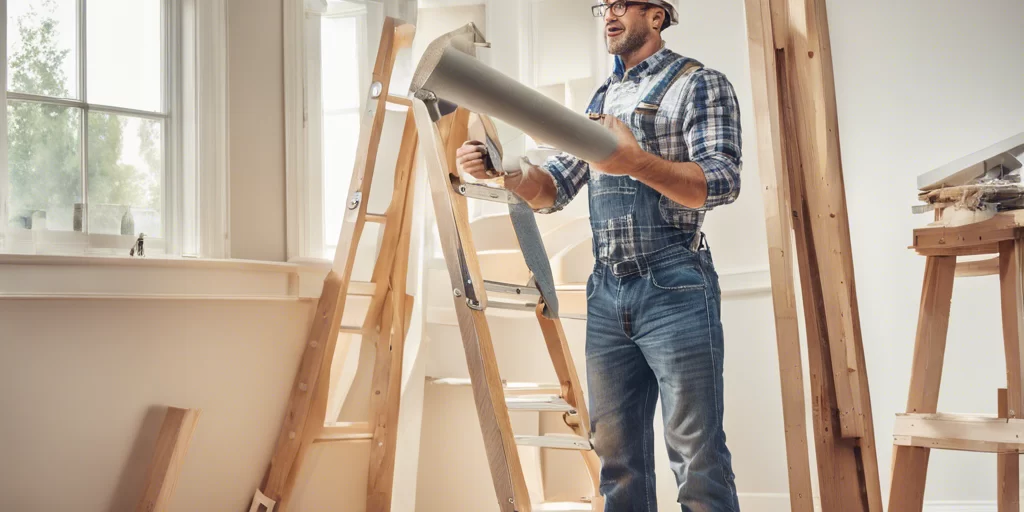Discover the benefits and drawbacks of tapping into your home equity for remodeling projects
Your home is not only a place to live but also an investment that can appreciate in value over time. If you’re a homeowner with a substantial ownership stake in your property, you may have considered using your home equity to fund renovations or repairs. But is it a smart financial move? In this article, we’ll explore the advantages and disadvantages of using home equity for home improvements, and provide insights into the different options available to homeowners.
Understanding Home Equity Financing Options
How does a home equity loan for home improvement work?
Your home equity represents the share of your home that you own outright, either through cash payment or mortgage repayment. Two popular options for tapping into home equity are home equity loans and home equity lines of credit (HELOCs). A home equity loan is a lump sum borrowed at a fixed interest rate, while a HELOC provides a line of credit with a variable interest rate. Both options require your home as collateral and have their pros and cons.
Benefits of using home equity for home improvement
One of the main benefits of using home equity for home improvements is the lower interest rates compared to other types of loans. Home equity loans and HELOCs offer comparatively lower interest rates because they are secured by your home. Additionally, the interest paid on home equity loans and HELOCs may be tax-deductible if the funds are used for home-related repairs or upgrades. Using your home equity for remodeling projects can also potentially increase the value of your home and improve your quality of life.
Drawbacks of using home equity for home improvement
The major drawback of using home equity for home improvements is the risk of losing your home if you fail to make the monthly payments. Home equity financing also involves additional costs, such as closing costs and fees. Another potential drawback is that home equity loans and HELOCs are typically for larger amounts, so you may end up borrowing more than you actually need. It’s essential to carefully evaluate your financial circumstances and budget before committing to a home equity loan or HELOC.
Alternatives to home equity loans for home improvement
If using your home equity for home improvements is not your preferred option, there are alternatives to consider. Personal loans and credit cards are unsecured options that may be quicker and easier to obtain but come with higher interest rates. Another alternative is a cash-out refinance, where you replace your existing mortgage with a new one that exceeds your current outstanding balance. Each alternative has its own advantages and disadvantages, so it’s important to weigh them against your specific needs and financial situation.
Home equity loans vs. HELOCs for home renovation
Home equity loans and HELOCs have similarities but also significant differences. Home equity loans are structured with fixed payments and are ideal for single, short-term projects with a precise cost. On the other hand, HELOCs offer flexibility with a draw period and repayment period, making them suitable for ongoing or uncertain projects. Understanding the pros and cons of each option can help you decide which is best for your home renovation needs.
How much can you borrow with a home equity loan?
The amount you can borrow with a home equity loan depends on the size of your ownership stake and the loan-to-value ratio. Lenders typically limit borrowing capacity to around 80-85% of your equity. However, specific limits can vary based on factors such as credit score, income, and payment history. It’s important to use a home equity calculator and consult with lenders to determine the maximum amount you can borrow.
What to consider before taking a home equity loan for remodeling
Before committing to a home equity loan or HELOC for remodeling, consider if the project will add value to your home and develop a budget and repayment plan. Consult real estate professionals to determine which renovations are likely to increase your home’s value. It’s crucial to carefully evaluate your financial capabilities and ensure you can afford the loan payments, factoring in unexpected expenses and potential delays in the project.
Conclusion:
Using your home equity for home improvements can be a smart financial move if done with careful consideration. The benefits of lower interest rates, potential tax deductions, and the possibility of increasing your home’s value make it an attractive option for homeowners. However, it’s essential to weigh the drawbacks, such as the risk of losing your home and additional costs. Exploring alternative options and carefully budgeting can help you make an informed decision and ensure a successful home renovation project.




